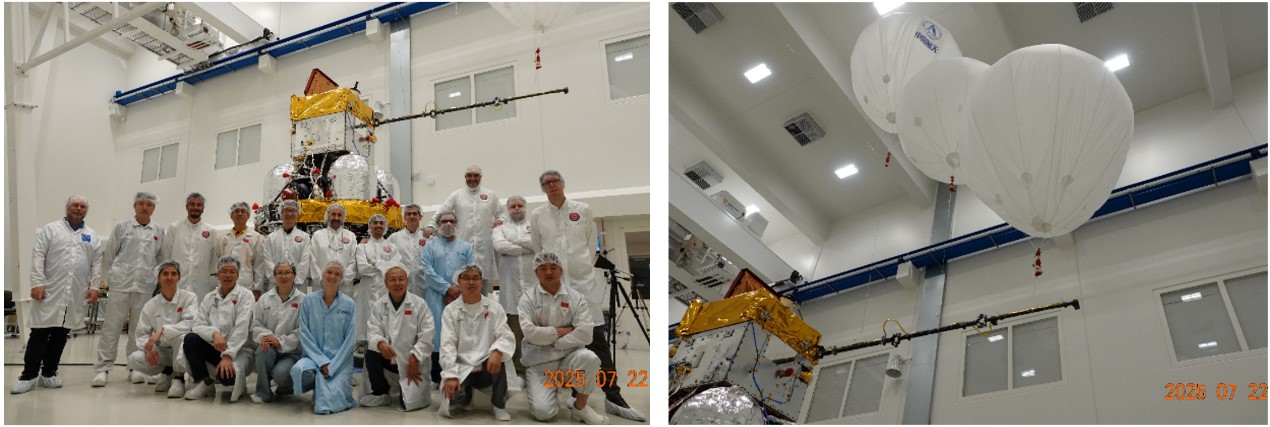SMILE MAG Boom Deployment Test Successfully Completed
2025-07-29
The Solar wind Magnetosphere Ionosphere Link Explorer (SMILE) is a major space exploration mission jointly carried out by the Chinese Academy of Sciences (CAS) and the European Space Agency (ESA). Scheduled for launch in early 2026, the satellite aims to take advantage of the critical window of the peak of the solar activity cycle to accurately capture the entire process of the dynamic interaction between the solar wind and Earth's magnetosphere, providing valuable observational data for space physics research.
As one of the four core scientific payloads onboard the SMILE satellite, the Magnetometer (MAG) is independently developed by the National Space Science Center (NSSC) of the Chinese Academy of Sciences and shoulders the important mission of detecting the space magnetic field environment. After the SMILE satellite successfully completed a series of large-scale key tests such as mock flight tests, whole-satellite mechanical tests, and thermal vacuum tests, on July 22, 2025, the research team conducted the first boom deployment test of the MAG flight model product in the whole-satellite state.
The test was jointly operated by Chinese and European technicians. Through careful preparation and precise execution, the magnetometer boom was deployed smoothly according to the scheduled procedure, and all performance parameters met the design requirements, making the test a complete success. Relevant teams from the National Space Science Center of the Chinese Academy of Sciences, the Innovation Academy for Microsatellites, as well as Airbus and the European Space Agency (ESA) participated in the test. As an important joint verification activity before the transfer of the SMILE satellite, the success of this test has laid a solid foundation for the smooth progress of the subsequent launch mission of the satellite.

